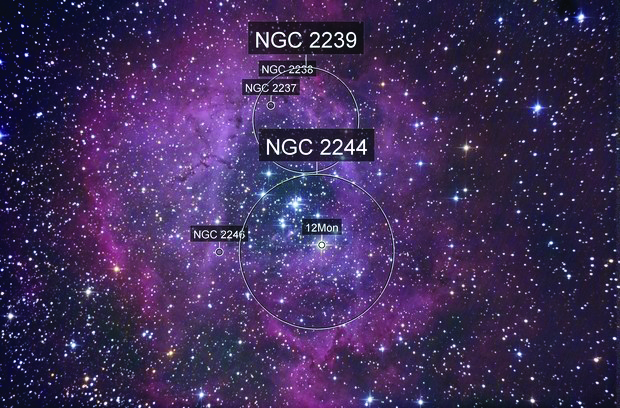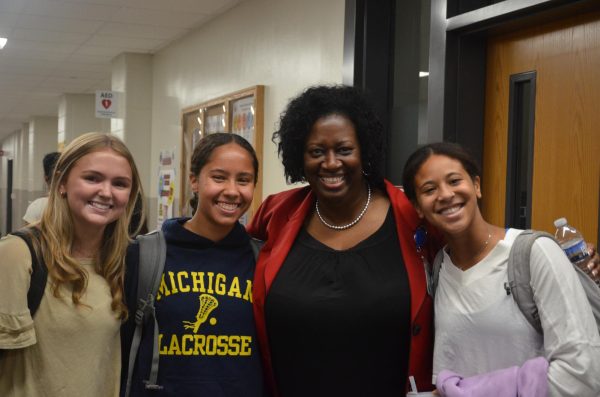Thrasher shoots for the stars, lands in first place
May 24, 2017
By Anya Lomsadze
Junior Andy Thrasher’s interests are quite literally out of this world. He reached for the stars — more accurately, for clouds of dust that form into stars — when he completed his astronomy project for the science fair.
His research on star formation won first place at the Georgia Science and Engineering Fair and was selected to go to the international level.
“I’ve always been interested in astronomy and science in general, but it wasn’t until I got my first telescope two years ago that I really started getting interested in astronomy,” Thrasher said. “The first thing I saw through my telescope was Arcturus, the star. It’s a red giant. It was the only thing that was visible in the sky.”
Thrasher is a familiar face at the state science fair. Last year, his project focusing on maximizing rocket thrust was recognized by the American Institute of Aeronautics and Astronautics. He wore
a Star Wars shirt and with his khakis and dress shoes.
“This year, I wore a tie that had constellations on it to science fair, but not a Star Wars shirt,” Thrasher said.
Thrasher won numerous accolades at the Georgia Science and Engineering Fair besides the overall first place this year. He was recognized by the Yale Science and Engineering Association, the University of Georgia Physics and Astronomy Department and the Tellus Museum.
Thrasher will be presenting his project twice in California in the next few months at both the Intel International Science and Engineering Fair and the National Junior Science & Humanities Symposium.
“Andy is very interested in physics and a hard worker in class,” Luke Esposito, physics teacher and Thrasher’s teacher sponsor for the science fair, said. “I’m very proud of him for getting so far with his project.”
Thrasher’s project focuses on cosmological formations known as bok globules, which are small interstellar clouds of very cold gas and dust that are so thick they are nearly totally opaque in visible light. Astronomer Bart Bok first observed these formations in the 1940s and hypothesized they were sites of stellar formation.
“When I found out about Bart Bok and how he discovered these globules of gas in space, I wanted to prove his hypothesis because it’s still a bit vague whether they are actual places of star formation,” Thrasher said.
Thrasher became curious about star formation after taking an astronomy course at Emory University over the summer.
“There’s a gap in our current knowledge of star formation,” Thrasher said. “We know that they start as clouds of gas and end up as stars, but what happens in between is a bit more unknown.”
Bok globules appear like black splotches in front of dense fields of stars. When he encountered them, British astronomer William Herschel said, “But, there is a hole in the heaven!” because the globules appeared like holes in the stellar background. The relative ambiguity regarding bok globules meant that there was not a wide range of research available on bok globules for Thrasher to use.
“There’s a lot of research on the properties of the clouds themselves, not so much on star formation,” Thrasher said. “I wanted to add my own to make it more definitive.”
To see the stars that are normally invisible under visible light, Thrasher had to use infrared telescopes. These enabled him to see through the clouds of bok globules to witness the stars within them. To gain access to infrared telescopes, Thrasher used a program called iTelescope that lets users choose between several telescopes stationed around the world in places as far off as Australia.
“I used my own telescope for some of the visible light observations for the northern hemisphere,” Thrasher said. “But a lot of the other objects were in the southern hemisphere, so I used iTelescope for their infrared observations.”
Thrasher’s knowledge from his astronomy class and previous experience with analyzing images taken by telescopes provided him the tools to analyze the images he collected of infrared bok globules from telescopes around the world.
“I do a lot of astrophotography,” Thrasher said. “The first part of my project was just looking for infrared sources that were in the globules. So that was pretty easy because you just need to align the images and look for something that shows up in the infrared that doesn’t show up in the visible light photos.”
His next step required the use of the Hertzsprung-Russell (HR) Diagram, a graphical tool that astronomers use to classify stars according to their luminosity, spectral type, color, temperature and evolutionary stage. He compared his data of detected protostars — very young stars that are still gathering mass from their parent molecular cloud — to known stars.
“I plotted a bunch of stars on an HR diagram and added in the possible protostars I found to make sure that they were all clustered in an area where you would expect a protostar to be,” Thrasher said.
Thrasher’s research culminated in an affirmation of the original hypothesis: the data showed that bok globules, these dark, seemingly invisible clouds are in fact places of star formation.
“The project was really his independent work,” Esposito said. “I just saw his plan. He flew autopilot to make his project a success.”
Besides his research and astrophotography hobby, Thrasher engages in astronomy by teaching the Atlanta community about space. His volunteer work at the Atlanta Astronomy Club includes bringing his telescope to science nights at schools. He is also an observatory assistant at the Fernbank Observatory where he operates the observatory and answers viewers’ questions.
Thrasher expects to continue doing this type of research.
“I definitely want to do something in physics, astronomy, cosmology or something like that in the future,” said Thrasher. “I would like to go to space, but it’s definitely not my goal. So few people become astronauts. But there’s the whole thing with SpaceX [a private aerospace manufacturing program] going to Mars, so that may be where I end up.”












